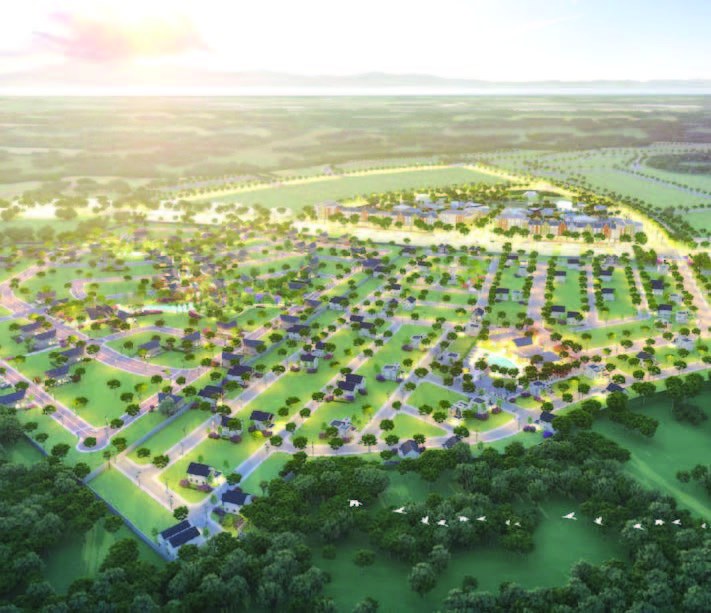Imagine stepping out of your apartment and walking to work in five minutes, grabbing lunch at a trendy café downstairs a movie with friends – all without leaving your neighborhood. This isn’t a fantasy from a futuristic film; it’s the reality for thousands of Filipinos living in the country’s revolutionary township developments.
As the Philippines accelerates its path toward modernity and economic growth, the concept of township living is rapidly redefining urban lifestyles across the country. Over the past several years—and intensifying in 2024 and 2025—world-class townships are transforming from mere real estate developments into vibrant, integrated communities that rival global benchmarks for urban planning, sustainability, and quality of life.
At the heart of these developments is Megaworld Corporation, a dominant force in Philippine real estate that, as of late 2024, manages 35 townships nationwide. These projects span from Metro Manila to emerging cities in the Visayas and Mindanao, such as Batangas, Ilocos Norte, and Cagayan de Oro, illustrating the geographic breadth of this trend. In 2024 alone, Megaworld launched four new townships covering approximately 400 hectares, reinforcing the scale and ambition of these ventures as part of the company’s 35th-anniversary milestone.
World-class townships in the Philippines emphasize integrated lifestyles—a seamless blend of residential, commercial, recreational, and office spaces. These mixed-use developments are designed to foster connected communities, reduce commute times, and enhance convenience. For instance, many Megaworld townships are home to leading IT and Business Process Management (BPM) companies, with 11 of the country’s top 15 IT-BPM firms operating within their boundaries. This concentration of employment opportunities close to modern residential areas exemplifies how these townships are not just places to live but hubs of economic activity.

Beyond functional integration, sustainability and green living are increasingly core to township design. The Philippine Development Plan 2023–2028 underscores the government’s commitment to sustainable urbanization and resilient infrastructure, aligning with the real estate sector’s growing adoption of eco-friendly building practices and community-centered planning. Green spaces, walkability, and smart transportation links are common features, allowing residents to enjoy cleaner environments and healthier lifestyles while minimizing carbon footprints.
In Metro Manila and other urban centers, the rise of these townships also addresses social shifts accelerated by the pandemic. The blending of home and work environments within the same community resonates with the increasing prevalence of remote and hybrid work models, reducing travel stress and promoting work-life balance. These townships offer not only residences but also lifestyle amenities such as retail centers, schools, hospitals, entertainment hubs, parks, and sports facilities, essentially creating self-contained cities that cater comprehensively to residents’ needs.
One of the most iconic examples is Bonifacio Global City (BGC) in Taguig, which evolved from a former military base to one of the most dynamic economic and lifestyle districts in the country within a decade. BGC exemplifies global standards through its modern infrastructure, pedestrian-friendly streets, green areas, cultural spaces, and thriving business ecosystem, becoming a magnet for local and foreign investment. Such success stories inspire ongoing projects in secondary cities and emerging regions, reflecting a nationwide push to balance growth and discourage the congestion typical of Metro Manila.
Looking ahead, industry leaders foresee continuing momentum for township developments. Megaworld alone plans to launch multiple new townships and residential projects in 2025, with a growing focus outside Metro Manila to address increasing urbanization in secondary cities. With a land bank of around 7,000 hectares and a pipeline of further office, retail, and hotel space expansions, these master-planned communities are positioned for robust growth and evolving innovation
These aren’t just real estate projects; they’re glimpses into the future of Filipino urban life. In a country where traffic jams and urban sprawl have long been accepted as inevitable, townships prove that there’s a better way forward.
For Filipino families considering their next move, and investors eyeing the country’s growth potential, these integrated communities represent more than just places to live or work. They’re laboratories for a new kind of Filipino lifestyle—one where convenience, community, and sustainability aren’t luxuries, but everyday realities.
The question isn’t whether this township model will continue to grow, but how quickly other developing nations will follow the Philippines’ lead in reimagining what urban living can be.





